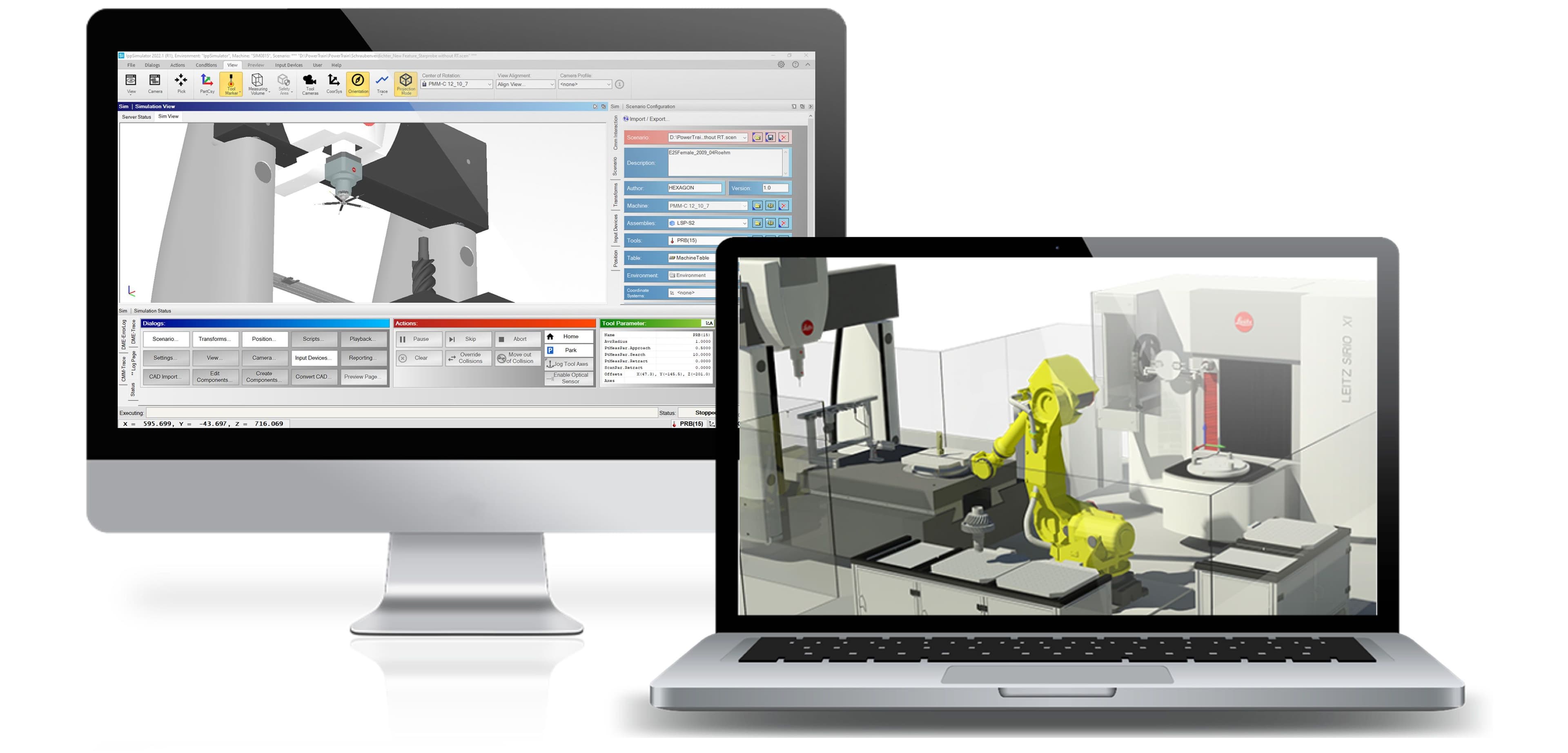I++ Simulator

Pioneer online simulation in the virtual laboratory
The I++ Simulator can be used to simulate existing measurement programs, as well as creating new ones using teach-in or offline methods such as CAD, all without machine downtime.
The benefits of using I ++ Simulator include:
Benefits And Features
Offline programming with the digital twin using the I++ DME standard

Optimise quality, drive productivity
I++ Simulator enables you to simulate measurement programs (such as QUINDOS) and test new applications, with complete visualisation of the coordinate measuring machine (CMM), sensors, fixtures, parts, loading systems, and more.

Reduce machine downtime
Keep your CMMs free for inspection. The digital part is measured virtually. A comparison with the CAD model or the conventional nominal data provided in your analysis software gives real results including deviations.

Use of the I++ DME standard
The simulator is based on the neutral measuring device interface I++ DME. In this sense, it functions as an I++ server and measuring device in separate software. It can be controlled with any I++-compliant measuring software (I++ client).
Training and Resources
Connect and collaborate with your peers and experts
The Nexus Community provides you with excellent peer forums and the opportunity to learn from thousands of others in your industry. Currently, hundreds of peer forums waiting for you to explore into. Discover best practices and get the answers you need to succeed. Register for Nexus to get full access the Community forums.
Our team is ready to help
Our technical support teams are on hand to answer your questions. Contact us through our online form and we will get right back to you.
You might be interested in...
Related products
© 2026 Hexagon AB and/or its subsidiaries

